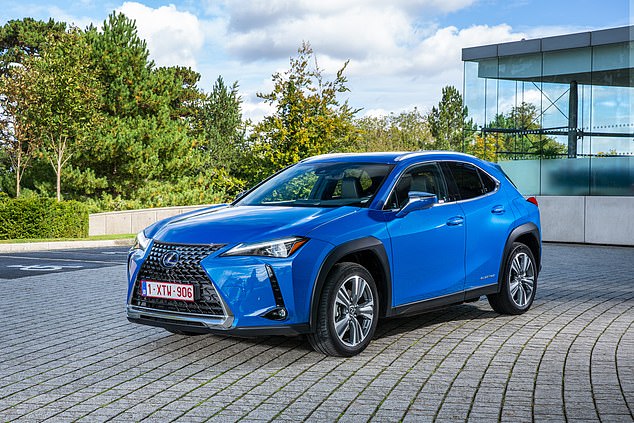Research shows that under real conditions, electric cars have up to a third less range than advertised
- The battery life of the cars tested was on average 29.9% less than advertised
Research has shown that under real conditions, electric cars have up to a third less battery life than advertised.
The official figures from car manufacturers on how many kilometers an electric car can drive on a full battery are based on a standardized test that was only carried out under warm conditions.
But an investigation of Which car magazine has found that when the cars are driven in the real world, especially in colder temperatures, the batteries drain much faster.
The magazine simulated how drivers actually use their cars by parking twelve vehicles outside in the cold overnight. The team then drove the cars around a 60-mile test track in Bedfordshire until their batteries ran out.
On average, the electric cars’ range was 29.9 percent less than advertised, with the £57,000 Lexus UX 300e Takumi recording the biggest shortfall, 100 miles short of the official figure of 277 miles.
Research has shown that electric cars have up to a third less battery life than advertised under real-world conditions, research shows (stock photo)

The official figures from car manufacturers on how many kilometers an EV can drive on a full battery are based on a standardized test conducted in warm conditions (stock photo)
The Lexus RZ 450e Takumi had the second highest deficit, dying 92 miles short of its advertised range of 251 miles.
The Volkswagen ID 7 Pro Match, priced at £51,550, had a real-world range of 250 miles, 33.6 percent less than advertised, and the third highest deficit.
However, the best performing of the twelve cars tested was the £68,810 Mercedes-Benz EQE 300 Sport Edition.
The car’s battery died after 300 miles, but this was still a 21 percent shortfall from what was originally advertised.
The magazine’s editor, Steve Huntingford, claimed the experiment was a much better way to test the capability of electric vehicles than official methods.

The £57,000 Lexus UX 300e Takumi recorded the biggest deficit, 100 miles short of the official figure of 273 miles
His team now regularly monitors the range of EVs in ‘real’ driving environments and found that there is an 18 percent difference in battery life between winter and summer temperatures.
Mr Huntingford said according to The Telegraph: ‘We do it every summer (and) every winter, because there is obviously a significant difference in the way battery efficiency works depending on cold weather.
‘We leave them outside in the cold conditions (overnight) because of the ambient temperature… so the batteries are exposed to a lower temperature and they are the worst possible conditions to test in.’
Edmund King, chairman of the AA, said: ‘Consumers should take official figures with a pinch of salt.’
He added that the results of the test should not come as a surprise, as driving style and weather conditions can greatly influence the range of any car.
Car manufacturers must test new electric vehicles in the laboratory according to the Globally Harmonized Test Procedure for Light Vehicles (WLTP).
